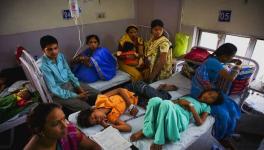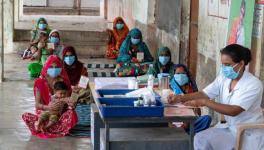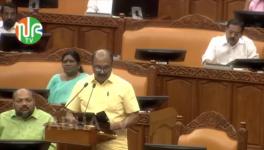The Tale of a Pandemic that Almost Wasn’t
The jury is now almost set to pronounce its verdict – the worst of the H1N1 pandemic is over...We would, in the coming weeks and months, expect a series of self adulatory reactions from the Health Ministry regarding how the country managed to stave of the worst effects of the pandemic. We shall not be alone in this exercise – health agencies across the world, led by the WHO, have already started the self congratulatory exercise.
There was a palpable sense of relief in the corridors of Nirman Bhawan – seat of the country’s Ministry of Health – as the new year was being ushered in. For much of 2009, the biggest “story” on health – going by column cms. that newspapers used up and television bytes on news channels – was the swine flu epidemic. The jury is now almost set to pronounce its verdict – the worst of the H1N1 pandemic is over.
We would, in the coming weeks and months, expect a series of self adulatory reactions from the Health Ministry regarding how the country managed to stave of the worst effects of the pandemic. We shall not be alone in this exercise – health agencies across the world, led by the WHO, have already started the self congratulatory exercise. By all accounts, in almost all countries, the pandemic has peaked and is set to start declining. Recent Government data suggests that the pandemic has affected about 26,000 people in India and has been responsible for less than a 1,000 deaths. Given that surveillance systems in India are notoriously weak, the actual figures could well be significantly – perhaps 3-10 times the official figures. But still, nowhere approaching the 33% of the Indian population (i.e. almost 350,000,000) that Sri Guam Nab Abad had predicted, would be affected, in August 2009.
The picture is similar to what is unfolding in most countries across the world. In the United States about 10,000 people are estimated to have died of the infection by mid-November, much less than even the lower end of a forecast of 30,000 to 90,000 deaths made in August by the Barack Obama’s Council of Advisers on Science and Technology. Researchers from the U.K.Medical Research Council and the US Government’s Centre for Disease Control (CDC) predict that by the time the winter wave of swine flu infection peters out, it will have been no more severe than an average flu season. Remember that these predictions come at a time when the first mass vaccination programme is yet to start anywhere in the world.
So, did a Herculean effort in public health lead to such a dramatic turnabout? Unfortunately the major reasons for the Pandemic not creating the predicted bang lies somewhere else. It is now becoming clear that this is the least lethal modern pandemic of influenza. Present estimates indicate that the H1N1 virus is killing between 1 in 2,000 to 1 in 4,000 people. Contrast this with the Spanish Flu pandemic in 1918, that killed 1 in 40 people who contracted the infection. Even the “less virulent” pandemics of 1957 and 1968 killed about 1 out of every 500 people affected. In other words, the present pandemic is almost 100 times less lethal than the 1918 pandemic. Research now shows that the swine flu is not easily spread from person to person as first thought. Researchers followed more than 200 families and found that the flu only spread to 13% of potential contacts.
Celebrations may still be premature as we are still not sure if the virus will mutate into a more virulent form, but the chances of that happening recede as the pandemic starts entering its second year.
Are there, then, any lessons to be drawn? The first lesson is of course that we still know very little about how new viruses will behave. The H1N1 virus has proved to be unusually co-operative – its infection rates are low, it rarely affects older populations, it is still susceptible to anti-viral medicines, and it has stubbornly refused to mutate and transform into a more lethal avatar. But precisely because we know so little about why this virus has proved to be so relatively benign, we know next to nothing about when the next truly lethal cousin will strike.
What if the pandemic had been of the predicted scale and virulence, or if the presence one suddenly starts living up to its early “promise”. Are the global and national efforts in the last 9 months or so cause for comfort? Unfortunately, the answer would have to be an emphatic no. At the global level efforts have been singularly lacking in purpose and coherence. The US authorities dithered for weeks, while knowing about the outbreak in Mexico, before instituting any measures. There was very little evidence of any co-operative spirit as the rich countries rushed to reserve a lion’s share of available vaccine manufacturing facilities. No global efforts were instituted to rein in drug companies who held patents on oseltamivir (tamiflu), the principal drug found to be effective against the H1N1 virus.
At the national level, response by the Government ranged from the comic to the tragic. Pronouncements ranged from sporadic show of bravado to pessimistic hand wringing in the face of an impending catastrophe (that mercifully did not unfold). Just one statistic should suffice to show how ill-prepared we really were. If Sri Azad’s initial projection of 350,000,000 cases were to be taken at face value, and the initial estimates of 1% of them requiring hospitalisation are factored in, we would have needed to hospitalise 3,500,000 swine flu cases over a period of 6 months. Calculating that each would have needed about a week’s stay in hospital, it would have meant an excess of 1,00,000 people would have needed to be hospitalised at any given point of time. Not just hospitalised, they would have to have had access to modern facilities, including facilities to be put on a ventilator. Contrast this with a few hundred beds that have been kept aside to treat swine flu patients, and the gross mismatch between demand and supply would become clear.
The issue that we need to understand is that you cannot plan for a response to an epidemic, after it has been set in motion. Epidemics can be tackled only if public health facilities exist when a pandemic hits a population. The pandemic that almost never was (we keep our fingers crossed as we say this), has shown up the utter lack of public facilities for health care in the country. If it had caused the destruction that was earlier predicted, we would perhaps had had no other option but to hide our heads, ostrich like in the sand, waiting for it to pass.
Get the latest reports & analysis with people's perspective on Protests, movements & deep analytical videos, discussions of the current affairs in your Telegram app. Subscribe to NewsClick's Telegram channel & get Real-Time updates on stories, as they get published on our website.
























